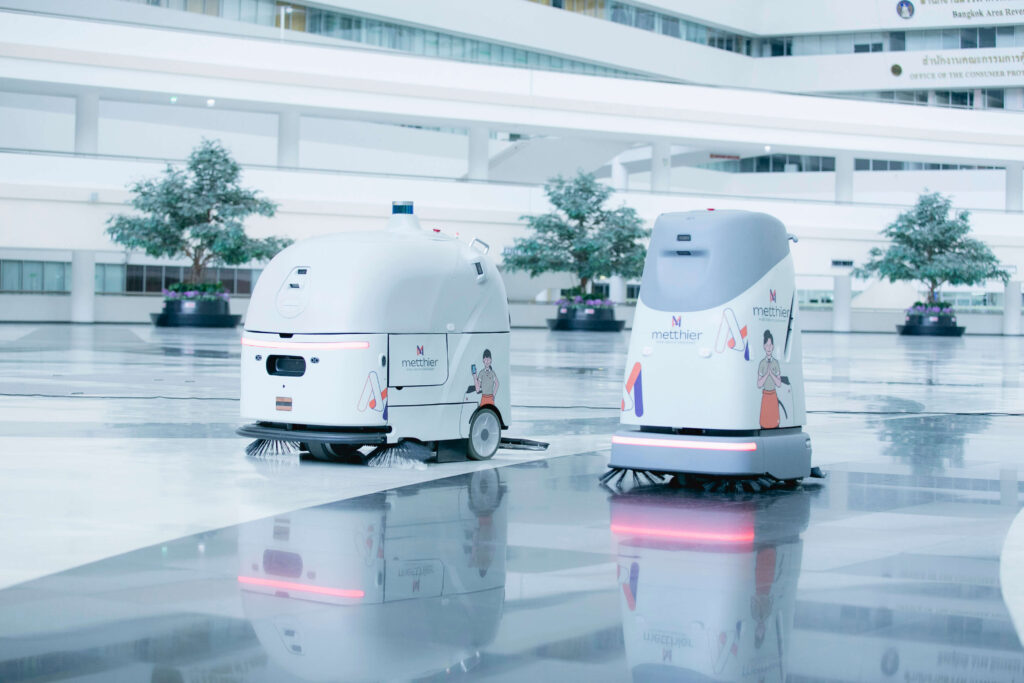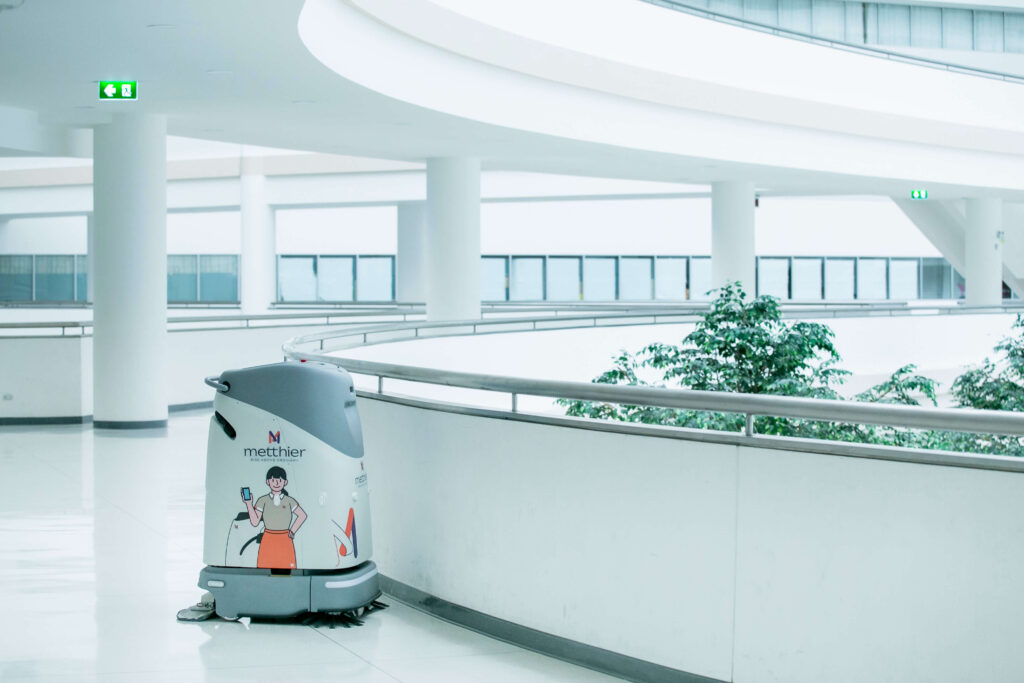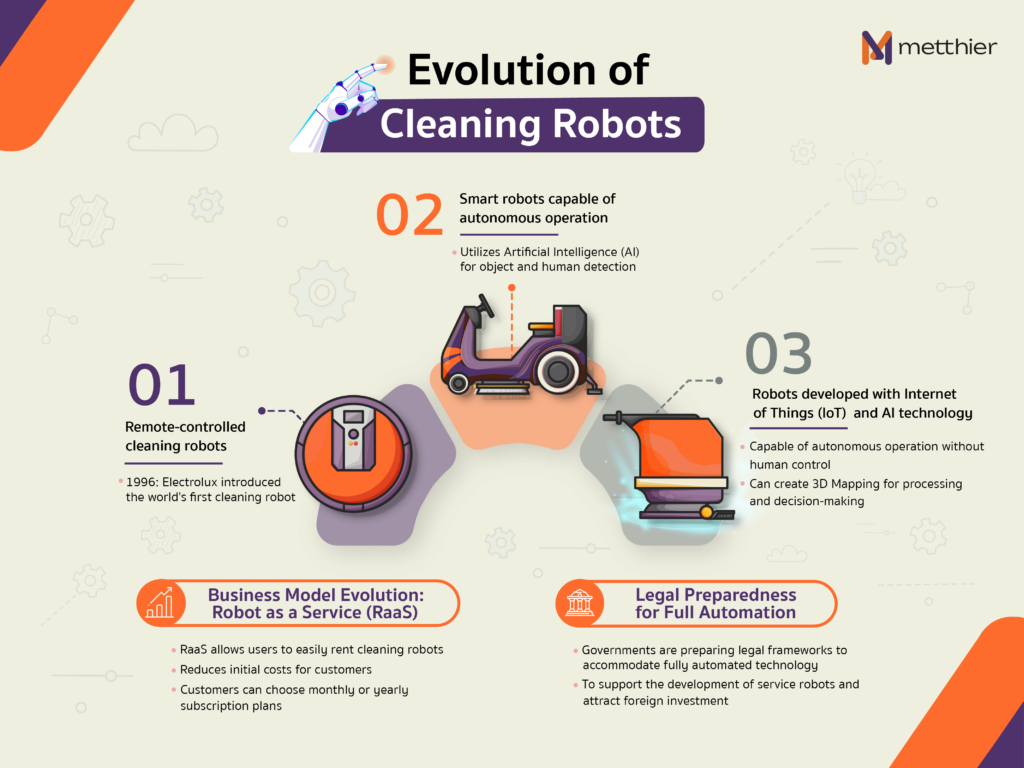Metthier Unveils Next Generation Cleaning Robots Empowered by IoT Technology Encourages Government to Prepare Legal Framework for Technology Adoption

In today’s era of smart property management, Professional Cleaning Robots have become a familiar sight in many buildings across Thailand. This reflects rapid developments and adaptations to meet the increasing market demand, particularly over the past 3-4 years. According to ResearchAndMarkets.com, the world’s leading market researcher forecasts a remarkable annual growth rate of approximately 20% between 2023 and 2030, reaching a market value of approximately $20.97 billion by 2030. Asia-Pacific, including Thailand, holds an estimated 30% market share. The main drivers for the increased demand for cleaning robots include labor shortages, an aging global population, and the need for increased efficiency while reducing costs.

Metthier, Thailand’s first smart facility management service provider, has revealed interesting insights into the development and transformation of the cleaning robot business. The transition to Gen 3 cleaning robots, capable of operating independently through IoT integration, marks a significant milestone. This reflects the evolution of the business model to better meet user needs, such as Robot as a Service (RaaS), as well as suggestions for legal improvements to support the full digital era in the future. Key points include:

1. Evolution of Cleaning Robots
The development of cleaning robots can be divided into three generations. The first generation involved robots that followed human input commands. Electrolux introduced the world’s first cleaning robot to the market in 1996, which required remote control for operation. However, the efficiency of robots during this period was not particularly high, and they were relatively expensive. Consequently, cleaning robots during this era did not achieve the success they deserved. The second generation (current generation) is characterized by smarter robots capable of operating autonomously, detecting objects and people. These robots incorporate Artificial Intelligence (AI). While they can clean independently, they still have limitations. For example, they cannot assess surface types to choose appropriate cleaning methods. Therefore, robots of this generation still need human assistance. The third generation, expected to arrive soon, involves robots integrated with Internet of Things (IoT) technology, as well as AI and Deep Learning. These robots can create 3D maps, enabling them to make decisions and process work almost as efficiently as humans. For instance, when a cleaning robot detects litter or spills, it can immediately go to clean them or adjust its cleaning mode to suit different surfaces. If this can be achieved, it is believed to revolutionize the cleaning robot industry.
2. Business Model Development: Robot as a Service (RaaS)
Due to the high costs of research and development for each robot, the selling price of cleaning robots is relatively high, resulting in slower market growth than expected. Therefore, the Robot as a Service (RaaS) business model was developed to make it easier for target groups to decide to use cleaning robots. With this business model, users can easily access robot services by renting them at a much lower price. After this service was introduced, the demand for cleaning robots grew significantly in the past 1-2 years. Not only can cleaning robots help improve the image of a building, but they also significantly reduce cleaning time. For example, while a single employee can clean an area of 1,500-2,000 square meters per day, walking about 10 kilometers, using robots can reduce the cleaning time to just 1-2 hours for the same area. Moreover, cleaning robot technology has advanced to the point where it can recycle wastewater for cleaning, reducing water wastage and being environmentally friendly.
3. Legal Preparedness for Fully–automated Systems
Legal issues are a contentious issue globally. For example, the consideration of amending laws related to autonomous car technology. However, the development of IoT technology is not limited to the automotive industry alone. Currently, there are companies in China that have used autonomous car technology for cleaning robots and have been authorized by the government to allow cleaning robots to operate on roads and public areas. Therefore, this issue is not far-fetched. Governments should plan and prepare to amend laws to be ready for what will definitely happen in the future. If we prepare legal readiness to support the commercial development of robots, it will continuously promote the development of commercial service robots and attract significant foreign investment. However, if the laws are outdated and entrepreneurs cannot commercialize technology, it may affect the country’s competitiveness.
#Metthier #RiseAboveOrdinary #SmartFacilityManagement
About Metthier Co., Ltd.
Metthier Co., Ltd. is a leader in the development of advanced technology in the domain of smart security and facility management. We have over 6,000 employees providing services nationwide, serving more than 400 clients. We offer a seamless experience, empowering our society to embrace a fulfilling life enriched by technology. A subsidiary of SKY Group.
We use necessary cookies to make our site work. We’d also like to set optional analytics cookies to help us improve our website being more efficient and powerful. We won’t set optional cookies unless you enable them. Using this tool will set the cookies on your device to remember your preferences. For more details, please see our Cookies Policy click.